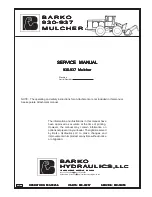
Memory Types
The Frog series of lighting desks
provide two types of memories -
scenes and chases.
Common Memory Data
All memories have a memory number,
memory type, fade up, fade down and
dwell times which is stored as part of
the memory data.
All memories have an LTP fade time,
and Colour, Beamshape and Position
actions (snap or fade) which determine
how the fixture parameters behave
when the memory is played back.
All memories have a Trigger which can
be set to Go, Auto, Real Time or
Timecode.
All fade and dwell times are in the
range 00:00.0 to 99:59.9 with a
resolution to 1/10 second.
The fade times and actions define the
transition from the current memory to
the incoming memory.
The Fade Up and Fade Down times
affect the generic channels and the
fixture brightness channels.
The LTP Fade time affects the fixture
colour, beamshape and position
channels, if applicable.
The Dwell Time determines how long
the current memory is output for, after
completing its fade.
The Trigger determines if the memory
requires a GO button press, runs
automatically, or is triggered at a
specific real time or SMPTE or MIDI
timecode.
All memories also have a Jump
parameter (normally set to
None
),
which allows the user to repeat
sections of the memory stack, or skip
memories, if required.
Scene Memories
A scene memory contains a set of
channel data for all 96 generic
channels and all assigned fixtures.
The fixture channel data includes
brightness, colour, beamshape and
position data.
Chase Memories
A chase memory consists of a number
of steps (maximum 99).
Each step contains a set of channel
data for all 96 generic channels and all
assigned fixtures.
The fixture channel data includes
brightness, colour, beamshape and
position data.
Chase Modifiers
A chase memory also contains the
following modifiers:
Direction
– the order in which the
chase steps are output - Forwards (>),
Backwards (<), or Bounce (<>).
Attack
– the transition between steps -
Snap, Slow Attack, Slow Decay or
Crossfade. This applies to generic and
fixture brightness channels only.
Colour Action
- the transition between
steps of the colour fixture channels -
Snap
or
Fade.
Beamshape Action
- the transition
between steps of the beamshape
fixture channels -
Snap
or
Fade.
Position Action
- the transition
between steps of the fixture position
channels -
Snap
or
Fade.
Drive
– the method by which the steps
are triggered when the chase is output
(Auto, Bass, Vari or Manual).
Speed
– defines the basic speed of the
chase (approx. 1 - 600 beats/minute).
Movement Effects
Memories that have been programmed
on the Fat Frog, Leap Frog, Bull Frog
or Mambo Frog desks may also
contain movement effect data.
LCD Display – Memories
When a show has been loaded into the
Frog-Box, the Memories screen is
displayed on the LCD. For example:
Current: 1 s
Next:
< 2 s>
Fade Up: <00:03.0>
Fade Down:<00:03.0>v
The up and down arrow keys move the
flashing cursor (
< >
) through the
editable fields on the screen.
The + and - keys are used to modify
the data in the field indicated by the
flashing cursor.
Memories Screen Data
Current
- The current memory on the
Playback X, together with a status
character (s = scene, c = chase).
This field is not editable.
Next
- The next memory on the
Playback X, together with a status
character (s = scene, c = chase).
Fade Up
- the fade up time for the
Next
memory.
Fade Down
- the fade down time for
the
Next
memory.
LTP Fade
- The LTP fade time for the
Next
memory.
Colour
- The action of the colour
fixture channels for the
Next
memory.
Beamshape
- The action of the
beamshape fixture channels for the
Next
memory.
Position
- The action of the position
fixture channels for the
Next
memory.
Dwell
- The dwell time for the
Next
memory.
Trigger
- The trigger for the
Next
memory (
Go
,
Auto
,
Real Time
or
Timecode
).
Time
- The time at which the
Next
memory will be triggered. (This field
only applies if the memory Trigger is
set to
Real Time or Timecode
).
Jump
- The memory number to jump
to on completion of the
Next
memory.
This is normally set to
None
.
3 - 2
Frog Box 73-749-00 Issue 4
Memories & Playback
Summary of Contents for Frog
Page 1: ...FROG BOX OPERATING MANUAL...
Page 2: ......
Page 22: ...5 4 Frog Box 73 749 00 Issue 4 Other Features...
Page 25: ......












































